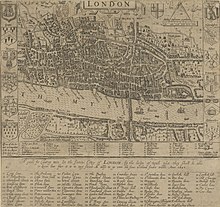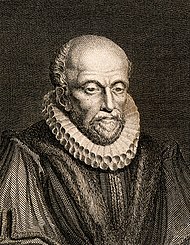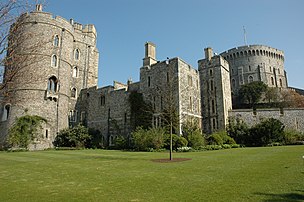
Christopher Marlowe, also known as Kit Marlowe, was an English playwright, poet and translator of the Elizabethan era. Marlowe is among the most famous of the Elizabethan playwrights. Based upon the "many imitations" of his play Tamburlaine, modern scholars consider him to have been the foremost dramatist in London in the years just before his mysterious early death. Some scholars also believe that he greatly influenced William Shakespeare, who was baptised in the same year as Marlowe and later succeeded him as the pre-eminent Elizabethan playwright. Marlowe was the first to achieve critical reputation for his use of blank verse, which became the standard for the era. His plays are distinguished by their overreaching protagonists. Themes found within Marlowe's literary works have been noted as humanistic with realistic emotions, which some scholars find difficult to reconcile with Marlowe's "anti-intellectualism" and his catering to the prurient tastes of his Elizabethan audiences for generous displays of extreme physical violence, cruelty, and bloodshed.

The Great Plague of London, lasting from 1665 to 1666, was the last major epidemic of the bubonic plague to occur in England. It happened within the centuries-long Second Pandemic, a period of intermittent bubonic plague epidemics that originated in Central Asia in 1331, and included related diseases such as pneumonic plague and septicemic plague, which lasted until 1750.
This article contains information about the literary events and publications of 1594.
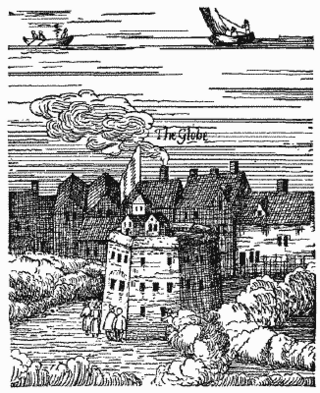
The Rose was an Elizabethan theatre. It was the fourth of the public theatres to be built, after The Theatre (1576), the Curtain (1577), and the theatre at Newington Butts – and the first of several playhouses to be situated in Bankside, Southwark, in a liberty outside the jurisdiction of the City of London's civic authorities. Its remains were excavated by archaeologists in 1989 and are listed by Historic England as a Scheduled Monument.
In Renaissance-era London, playing company was the usual term for a company of actors. These companies were organised around a group of ten or so shareholders, who performed in the plays but were also responsible for management. The sharers employed "hired men" – that is, the minor actors and the workers behind the scenes. The major companies were based at specific theatres in London; the most successful of them, William Shakespeare's company the King's Men, had the open-air Globe Theatre for summer seasons and the enclosed Blackfriars Theatre in the winters. The Admiral's Men occupied the Rose Theatre in the 1590s, and the Fortune Theatre in the early 17th century.

Simon Forman was an Elizabethan astrologer, occultist and herbalist active in London during the reigns of Queen Elizabeth I and James I of England. His reputation, however, was severely tarnished after his death when he was implicated in the plot to kill Sir Thomas Overbury. Astrologers continued to revere him, while writers from Ben Jonson to Nathaniel Hawthorne came to characterize him as either a fool or an evil magician in league with the Devil.
Lord Strange's Men was an Elizabethan playing company, comprising retainers of the household of Ferdinando Stanley, Lord Strange. They are best known in their final phase of activity in the late 1580s and early 1590s. After 25 September 1593, they were known as the Earl of Derby's Men, that being the date of Stanley's accession to his father's title.
The Prescot Playhouse was an Elizabethan theatre in the town of Prescot, which was then in Lancashire. The playhouse was built before 1603, probably in the mid-1590s, and probably remained in theatrical use until 1609. It was one of the few free-standing theatres in England outside London, and probably hosted performances by the playing companies maintained by the Earls of Derby.
The Earl of Sussex's Men was a playing company or troupe of actors in Elizabethan and Jacobean England, most notable for their connection with the early career of William Shakespeare.

The Black Death was one of the most devastating pandemics in human history, resulting in the deaths of an estimated 75 to 200 million people in Eurasia, and peaking in Eurasia from 1321 to 1353. Its migration followed the sea and land trading routes of the medieval world. This migration has been studied for centuries as an example of how the spread of contagious diseases is impacted by human society and economics.

In 1563, London experienced its worst episode of plague during the sixteenth century. At least 20,136 people in London and surrounding parishes were recorded to have died of plague during the outbreak. Around 24% of London's population ultimately perished, but the plague affected London's unsanitary parishes and neighbourhoods the most.
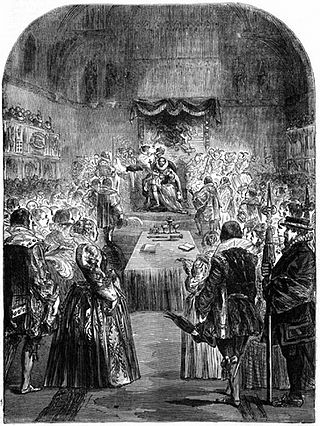
The 1603 London plague epidemic was the first of the 17th century and marked the transition from the Tudor to the Stuart period.

The 1813–1814 Malta plague epidemic was the last major outbreak of plague on the islands of Malta and Gozo. It occurred between March 1813 and January 1814 on Malta and between February and May 1814 on Gozo, and the epidemic was officially declared to be over in September 1814. It resulted in approximately 4500 deaths, which was about 5% of the islands' population.
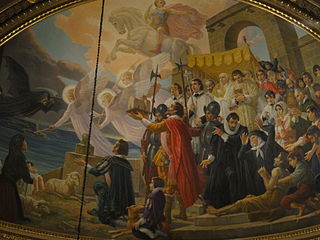
The 1675–1676 Malta plague epidemic was a major outbreak of plague on the island of Malta, then ruled by the Order of St John. It occurred between December 1675 and August 1676, and it resulted in approximately 11,300 deaths, making it the deadliest epidemic in Maltese history. Most deaths were in the urban areas, including the capital Valletta and the Three Cities, which had a mortality rate of about 41%. In the rural settlements, the mortality rate was 6.9%.

The 1592–1593 Malta plague epidemic was a major outbreak of plague on the island of Malta, then ruled by the Order of St John. It occurred in three waves between June 1592 and September 1593, during the second plague pandemic, and it resulted in approximately 3000 deaths, which amounted to about 11% of the population. The disease was imported to Malta by Tuscan galleys that had captured vessels from Alexandria. In 1593, the Order requested assistance from Sicily to deal with the epidemic, and the measures taken were effective in containing plague.

In 1557, a pandemic strain of influenza emerged in Asia, then spread to Africa, Europe, and eventually the Americas. This flu was highly infectious and presented with intense, occasionally lethal symptoms. Medical historians like Thomas Short, Lazare Rivière and Charles Creighton gathered descriptions of catarrhal fevers recognized as influenza by modern physicians attacking populations with the greatest intensity between 1557 and 1559. The 1557 flu saw governments, for possibly the first time, inviting physicians to instill bureaucratic organization into epidemic responses. It is also the first pandemic where influenza is pathologically linked to miscarriages, given its first English names, and is reliably recorded as having spread globally. Influenza caused higher burial rates, near-universal infection, and economic turmoil as it returned in repeated waves.

In 1580 a severe influenza pandemic was recorded on several continents. The virus originated in Asia and spread along the Silk Road through the Middle East into Europe and Africa, where newly established maritime trade routes and moving armies facilitated its worldwide spread. Contemporary historian Johann Boekel wrote that it spread over all of Europe in six weeks, in which thousands died and nearly everyone was infected. Those who witnessed the epidemic variously called the disease nicknames like coqueluche,Shaufkrankeit,castrone, or variations of catarrh or fever. Physicians of the time increasingly appreciated that "epidemic catarrhs" were being directly caused by a contagious agent instead of the stars or environment.
The 1623 Malta plague outbreak was a minor outbreak of plague on the island of Malta, then ruled by the Order of St John. It was probably caused by infected materials from a major epidemic in 1592–1593, and it was successfully contained after causing 40 to 45 deaths.
The 1655 Malta plague outbreak was a minor outbreak of plague on the island of Malta, then ruled by the Order of St John. The outbreak appeared in Kalkara and some cases were reported in Żabbar and the urban area around the Grand Harbour. Restrictive measures were imposed and the outbreak was contained after causing 20 deaths.
